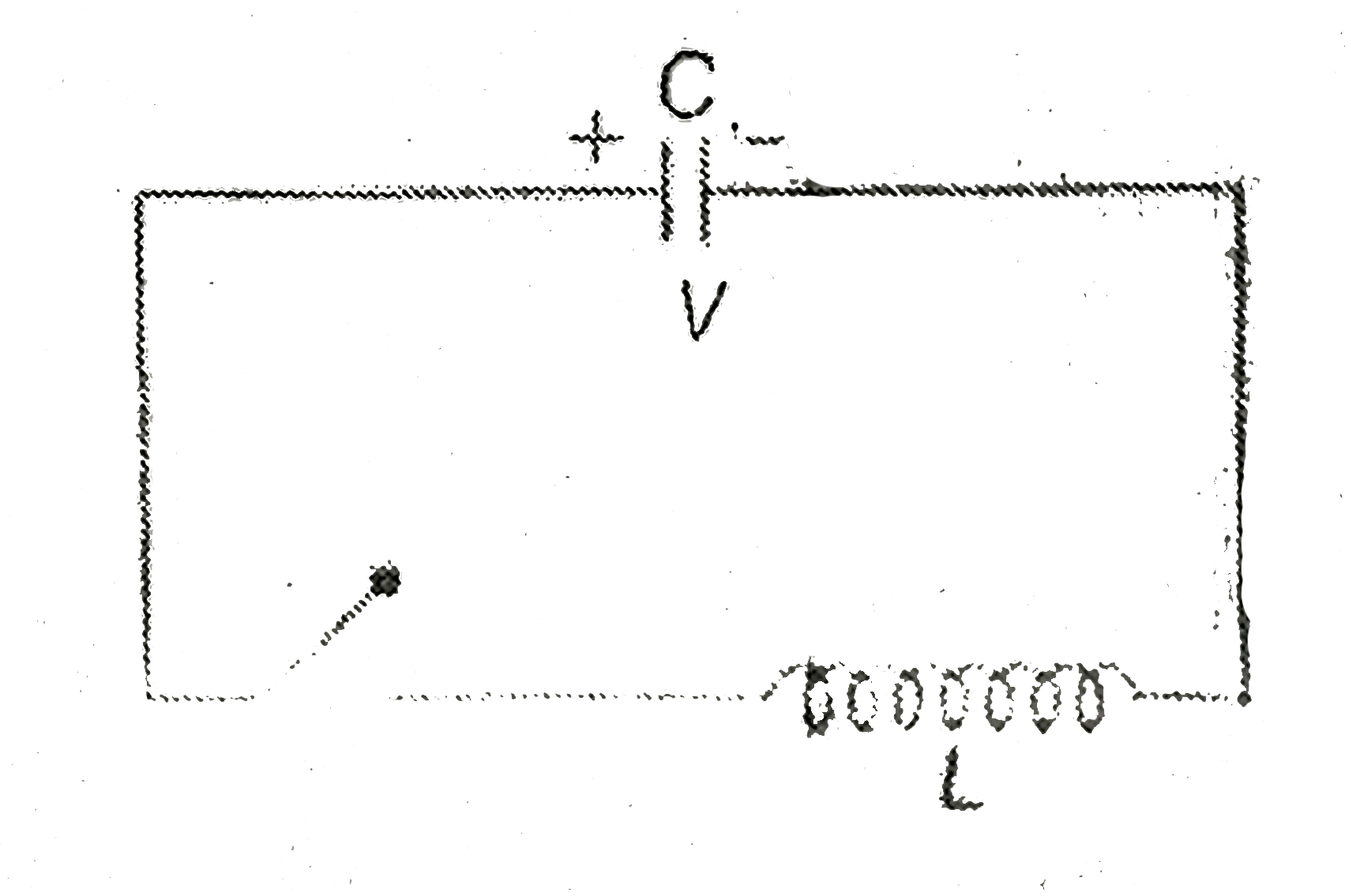A capacitor of capacitance C1 is charged to a potential V1 while another capacitor of capacitance C2 is charged to a potential difference V2 . The capacitors are now disconnected from their respective charging batteries and connected in parallel to each other .
(a) Find the total energy stored in the two capacitors before they are connected.
(b) Find the total energy stored in the parallel combination of the two capacitors.
(c ) Explain the reason for the difference of energy in parallel combination in comparison to the total energy before they are connected.
Let's solve the question step by step.
Part (a): Total Energy Stored Before Connection
1. Energy in Capacitor C1: The energy stored in a capacitor is given by the formula:
E1=12C1V21
where C1 is the capacitance and V1 is the potential difference across capacitor C1.
2. Energy in Capacitor C2: Similarly, for capacitor C2, the energy stored is:
E2=12C2V22
where C2 is the capacitance and V2 is the potential difference across capacitor C2.
3. Total Energy Before Connection: The total energy stored in both capacitors before they are connected is the sum of the energies of the two capacitors:
Etotal=E1+E2=12C1V21+12C2V22
Part (b): Total Energy Stored After Connection
1. Effective Capacitance: When the capacitors are connected in parallel, the effective capacitance C is given by:
C=C1+C2
2. Total Charge Before Connection: The total charge Q before they are connected is:
Q=C1V1+C2V2
3. Potential Across the Parallel Combination: The potential V across the parallel combination can be calculated using the total charge and effective capacitance:
V=QC=C1V1+C2V2C1+C2
4. Total Energy After Connection: The total energy stored in the parallel combination is given by:
Eparallel=12CV2=12(C1+C2)(C1V1+C2V2C1+C2)2
Simplifying this gives:
Eparallel=12(C1V1+C2V2)2C1+C2
Part (c): Explanation for the Difference in Energy
The difference in energy before and after the connection can be explained by the fact that when the capacitors are connected in parallel, charge redistributes between them. This redistribution leads to a loss of energy due to:
1. Charge Movement: When the capacitors are connected, charge flows from one capacitor to the other until they reach the same potential. During this process, some energy is dissipated as heat due to resistive losses in the connecting wires or internal resistance in the capacitors.
2. Energy Loss: The energy stored in the system after the connection is less than the total energy stored before the connection due to this energy loss during charge redistribution.
Summary of Solutions
- (a) Total energy before connection:
Etotal=12C1V21+12C2V22
- (b) Total energy after connection:
Eparallel=12(C1V1+C2V2)2C1+C2
- (c) The difference in energy is due to energy loss during the movement of charge when the capacitors are connected.
E1=12C1V21
where C1 is the capacitance and V1 is the potential difference across capacitor C1.
E2=12C2V22
where C2 is the capacitance and V2 is the potential difference across capacitor C2.
Etotal=E1+E2=12C1V21+12C2V22
C=C1+C2
Q=C1V1+C2V2
V=QC=C1V1+C2V2C1+C2
Eparallel=12CV2=12(C1+C2)(C1V1+C2V2C1+C2)2
Simplifying this gives:
Eparallel=12(C1V1+C2V2)2C1+C2
Etotal=12C1V21+12C2V22
Eparallel=12(C1V1+C2V2)2C1+C2
Topper's Solved these Questions
- XII BOARDSBOOK - XII BOARD PREVIOUS YEAR PAPER ENGLISHCHAPTER - XII BOARDSEXERCISE - SECTION - C
10 Videos
- XII BOARDSBOOK - XII BOARD PREVIOUS YEAR PAPER ENGLISHCHAPTER - XII BOARDSEXERCISE - SECTION - A
7 Videos
- XII BOARDSBOOK - XII BOARD PREVIOUS YEAR PAPER ENGLISHCHAPTER - XII BOARDSEXERCISE - SECTION - D
3 Videos
- SAMPLE PAPER 2019BOOK - XII BOARD PREVIOUS YEAR PAPER ENGLISHCHAPTER - SAMPLE PAPER 2019EXERCISE - SECTION D
6 Videos
Similar Questions
Find the energy stored in a capacitor of capacitance 100μF when it is charged to a potential difference of 20 V.
View SolutionA capacitor of capacitance C0 is charged to potential V0. Now it is connected to another uncharged capacitor of capacitance C02. Calculate the heat loss in this process.
View Solution
Knowledge Check
A capacitor or capacitance C1 is charge to a potential V and then connected in parallel to an uncharged capacitor of capacitance C2. The fianl potential difference across each capacitor will be
AC1VC1+C2BC2VC1+C2C1+C2C1D1−C2C1
A capacitor of capacitnace C is charged to a potential difference V and then disconnected from the battery. Now it is connected to an inductor of inductance L at t=0. Then

View SolutionA parallel plate capacitor of capacitance C is connected to a battery and is charged to a potential difference V. Another capacitor of capacitance 2C is ismilarly charged to a potential difference 2V. The charging battery is now disconnected and the capacitors are connected in parallel to each other in such a way that the poistive terminal of one is connected to the negative terminal of the other. The final energy of the configuration is
View SolutionA capacitor of capacitance C1 is charged to a potential difference V and then connected with an uncharged capacitor of capacitance C2 a resistance R. The switch is closed at t = 0. Choose the correct option(s):
View SolutionA capacitor of capacity C is charged to a potential difference V and another capacitor of capacity 2C is charged to a potential difference 4V. The charged batteries are disconnected and the two capacitors are connected with reverse polarity (i.e. positive plate of first capacitor is connected to negative plate of second capacitor). The heat produced during the redistribution of charge between the capacitors will be
View SolutionA capacitor of capacitance C is charged to a potential V. The flux of the electric field through a closed surface enclosing the capacitor is
View SolutionAn ideal capacitor of capacitance 0.2μF is charged to a potential difference of 10V. The charging battery is than disconnected. The capacitor is then connected to an ideal inductor of self inductance 0.5mH. The current at a time when the potential difference across the capacitor is 5V is :
View SolutionA capacitor of capacitance C is charged to a potential difference V from a cell and then disconncted from it. A charge +Q is now given to its positive plate. The potential difference across the capacitor is now
View Solution
